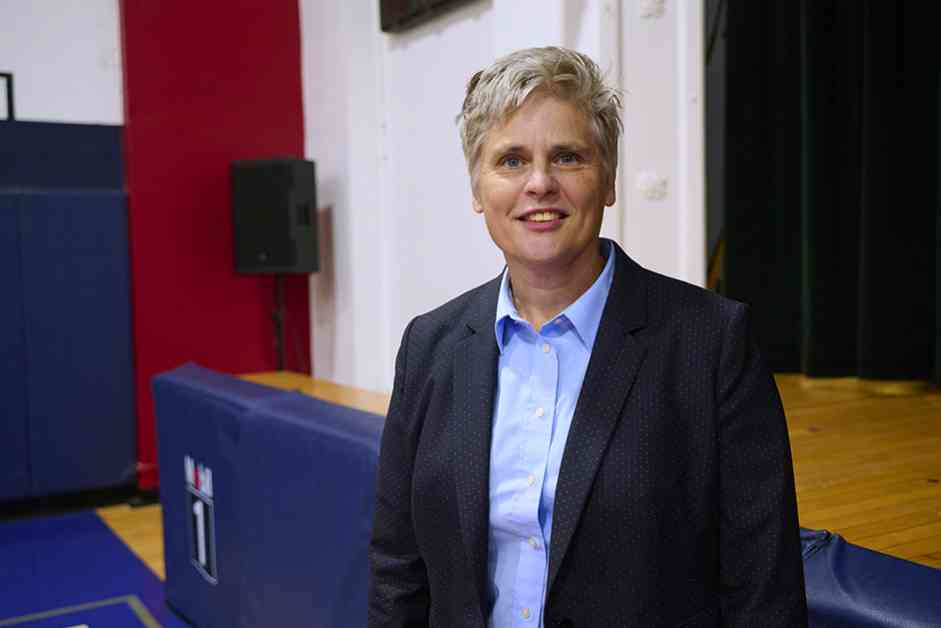Addressing Juvenile Crime Challenges in Minneapolis: Police and Prosecutors’ Strategies
In the wake of the recent shooting incident involving four children in a stolen car in Minneapolis, tensions have escalated between the Minneapolis Police Department (MPD) Chief Brian O’Hara and Hennepin County Attorney Mary Moriarty. The disagreement stems from conflicting claims about the handling of juvenile auto theft cases, with the chief alleging that his officers are making arrests and referring cases to the county attorney, while Moriarty asserts that her office is not receiving these referrals. This public exchange has shed light on the challenges faced by law enforcement and prosecutors in addressing juvenile crime in the city.
The Shooting Incident and the Blame Game
The incident that sparked the recent controversy occurred on August 18, when four children between the ages of 11 and 14 were shot while riding in a stolen vehicle. Chief O’Hara expressed frustration during a news conference, pointing to a specific state law that he says hinders the prosecution of juveniles under 14 for criminal offenses. He emphasized the need to deter such behavior and voiced concerns about the welfare of the children involved.
Moriarty’s Response and the Youth Auto Theft Early Intervention Initiative
In response to Chief O’Hara’s statements, County Attorney Mary Moriarty released a statement refuting the claims of inaction on her office’s part. She highlighted the Youth Auto Theft Early Intervention Initiative, which was established in collaboration with law enforcement to address juvenile auto theft cases. The initiative involves providing voluntary services to youth and their families through a social worker to prevent future incidents of car theft. Despite the success of the program in reducing recidivism rates among participants, Moriarty noted that only a few cases have been referred to her office by the MPD.
The Nuances of Juvenile Justice and Collaboration between Law Enforcement and Prosecutors
Rachel Moran, a professor at the University of St. Thomas School of Law, weighed in on the ongoing dispute between Chief O’Hara and County Attorney Moriarty. She highlighted the complexities of juvenile justice, noting that while there are limitations on charging minors under certain laws, there are alternative avenues for addressing delinquency offenses. Moran emphasized the importance of collaboration between law enforcement and prosecutors in effectively addressing juvenile crime, despite differences in approach.
Challenges and Opportunities in Juvenile Crime Prevention and Rehabilitation
The exchange between Chief O’Hara and County Attorney Moriarty underscores the challenges and opportunities in juvenile crime prevention and rehabilitation efforts. While law enforcement and prosecutors may have differing perspectives on public safety and criminal justice, there is a shared goal of ensuring the well-being of young offenders and preventing future criminal behavior. By working together and leveraging resources such as the Youth Auto Theft Early Intervention Initiative, stakeholders can make meaningful strides in addressing juvenile crime in Minneapolis.
Moving Forward: Collaborative Solutions for Juvenile Justice Reform
As Minneapolis grapples with the complex issue of juvenile crime, it is essential for law enforcement, prosecutors, and community stakeholders to come together to develop collaborative solutions. By fostering communication, sharing resources, and aligning strategies, the city can create a more effective and holistic approach to juvenile justice reform. Through initiatives like the Youth Auto Theft Early Intervention Initiative and ongoing dialogue between key players in the criminal justice system, Minneapolis can work towards a safer and more equitable future for its youth.
In conclusion, the challenges of addressing juvenile crime in Minneapolis require a multifaceted and collaborative approach from law enforcement, prosecutors, and community partners. By recognizing the nuances of juvenile justice, leveraging innovative programs like the Youth Auto Theft Early Intervention Initiative, and fostering collaboration between stakeholders, the city can make significant strides in preventing youth crime and promoting rehabilitation. It is crucial for all involved parties to work towards a shared goal of ensuring the safety and well-being of young offenders while upholding justice and accountability in the community.

